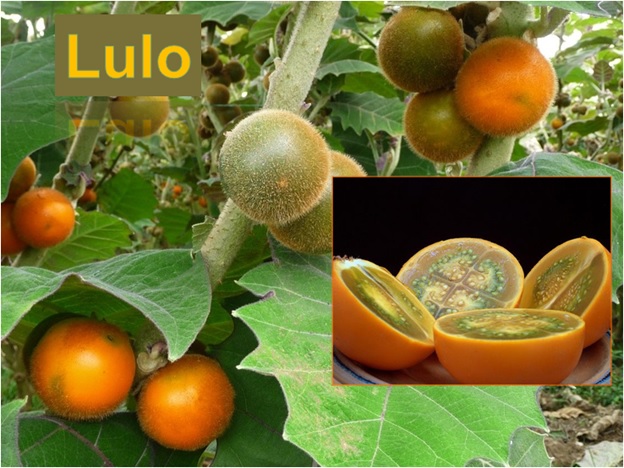
Lulo Fruit
Solanum quitoense, known as naranjilla is a close relative of tomato and egg plant. The usually spineless naranjilla is believed to be indigenous and most abundant in Peru, Ecuador and southern Colombia. The naranjilla plant is attractive, with large elongated heart- or oval-shaped leaves up to 45 cm in length. The leaves and stems of the plant are covered in short purple hairs. Inside the naranjilla fruit, the green to yellow juicy sections are separated by membranous walls.
The fruit tastes like a delicious combination of pineapple and lemon and is peppered with edible seeds.
- The shells may be stuffed with a mixture of banana and other ingredients and baked.
- Ripe naranjillas, freed of hairs, may be casually consumed out-of-hand by cutting in half and squeezing the contents of each half into the mouth.
- The most popular use of the naranjilla is in the form of juice. The fruit (including the seeds) is also used in various sherbets, ice creams, native specialties and may even be made into wine.
- It is a – immune system booster, good for digestive system, takes care of vision, good blood circulation, eliminates constipation, lowers cholesterol,.
- It is rich in vitamin c and antioxidants.
Image credit: CIAT, Lulo1 https://www.flickr.com/photos/ciat/4733283187 (CC by 2.0)
Author: Sumana Rao | Posted on: February 25, 2016






















Write a comment